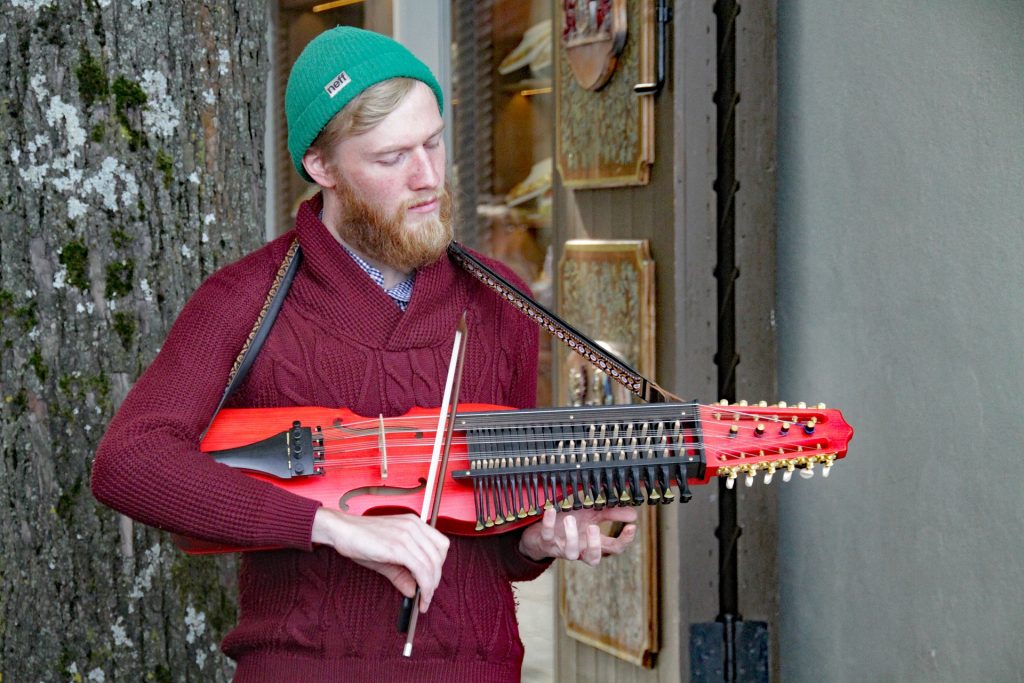Report: More private funding is needed to ensure the vitality of Estonian culture and sports
In Estonia, culture and sports are mostly reliant on public funds, while in the Nordic countries, for example, these sectors see significantly more private investment from companies and private individuals. In a recent short report, the Foresight Centre highlights how these sectors could receive over ten million euros more annually if Estonian companies raised their financial donations from the current 0.5% to 3%.

According to Uku Varblane, Head of Research at the Foresight Centre, Estonia ranks among the highest spenders on culture and sports from its national budget in Europe. “National investment in these sectors may not increase significantly in the coming years, as the State prioritises other sectors such as social affairs and healthcare,” said Varblane. “Therefore, to ensure the continuing vitality of culture and sports, additional investments from the private sector in the form of donations are necessary.”
Estonian companies can donate up to a billion euros every year without having to pay income tax, yet only a small fraction of this is utilised. For instance, in 2022, only a total of four million euros were donated to culture and sports organisations that are listed as being exempt from income tax. “There have been various proposed solutions to increase the share of private funding in the sports and culture sectors,” added Varblane. “Studies show that support from the State and local municipalities can increase the sizes of donations from private companies, as they are seen as forms of quality assurance by the companies.”
In its research titled ‘The Future of Involving Private Investment in the Culture and Sports Sectors’, the Foresight Centre has developed a calculator to assess the engagement of private funding in these sectors. This tool aims to evaluate the proportion of private funds allocated to culture and sports based on the donating behaviours of companies and private individuals and its impact on the revenues and expenditures of the State. The Foresight Centre highlighted three scenarios based on the simulations run using the calculator.
The base scenario assumes that the level of companies making donations remains the same, at around 0.5% of all private companies. The number of donors and the total amount of donations increases proportionally along with the number of companies and their profits, leading to relatively little additional funding for the culture and sports sectors.
In the ‘Companies +’ scenario, the proportion of companies making donations increases to 3% of all private companies within the next five years. This would result in the quadrupling of donation revenues in the culture and sports sectors compared to the base scenario. “Such developments may not occur naturally. It may be necessary to implement incentivising measures,” said Uku Varblane.
The most beneficial scenario for culture and sports is called ‘State empowerment’. In this scenario, the government supplements donations by at least 3% of donating company profits. Within the first year of implementation, this support scheme would be projected to collect 13 million euros, which is an increase of 8.7 million euros compared to the current level. State support would make up around a third of the funding, or around 2.9 million euros in the first year. “State funding would be partially supported by additional tax revenue generated from the increased engagement in culture and sports activities. In the long term, this additional revenue would also lead to an increase in employment and longer active engagement in these fields,” explained Varblane.
According to estimations, every euro invested in the fields of sports and recreational activities increases the country’s GDP by 1.4 euros. Studies show that engaging in recreational and sports activities and culture allows citizens to remain employed and active for longer. In 2022, only 13.1% of people aged 65 or older earned revenue in Estonia. If this level could be raised by just 1%, the State would receive an additional 7.1 million euros annually in income taxes from individuals, in addition to revenue from other taxes.
The short report ‘Scenarios for Involving Private Funding in the Culture and Sports Sectors’ is founded on simulations conducted using the calculator developed for involving private funding in these sectors, as part of the Foresight Centre’s research titled ‘The Future of Involving Private Investment in the Culture and Sports Sectors’. The research examines the factors and trends influencing donations to the culture and sports sectors and their possible future developments.
Latest news
-
10.11 2025Report: Estonia could learn how to control healthcare costs from the Netherlands
The expenses of the Estonian Health Insurance Fund significantly exceed its revenues, and the accumulated reserves will be depleted in the next five years. Other European countries in the same situation have cut healthcare services and increased people’s co-payments. According to the Foresight Centre’s new short report “Other countries’ experiences in managing healthcare budget deficits”, both solutions have worsened public health and deepened inequality.

 An independent think tank at the Riigikogu
An independent think tank at the Riigikogu